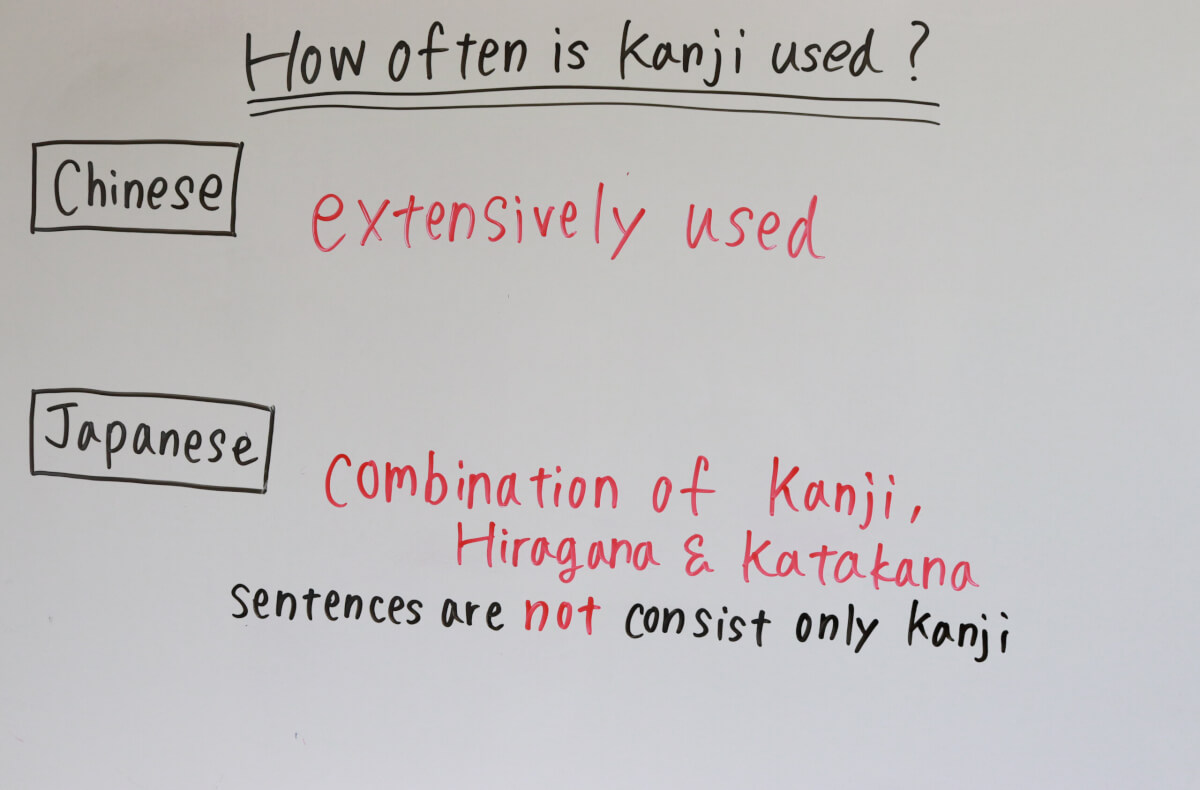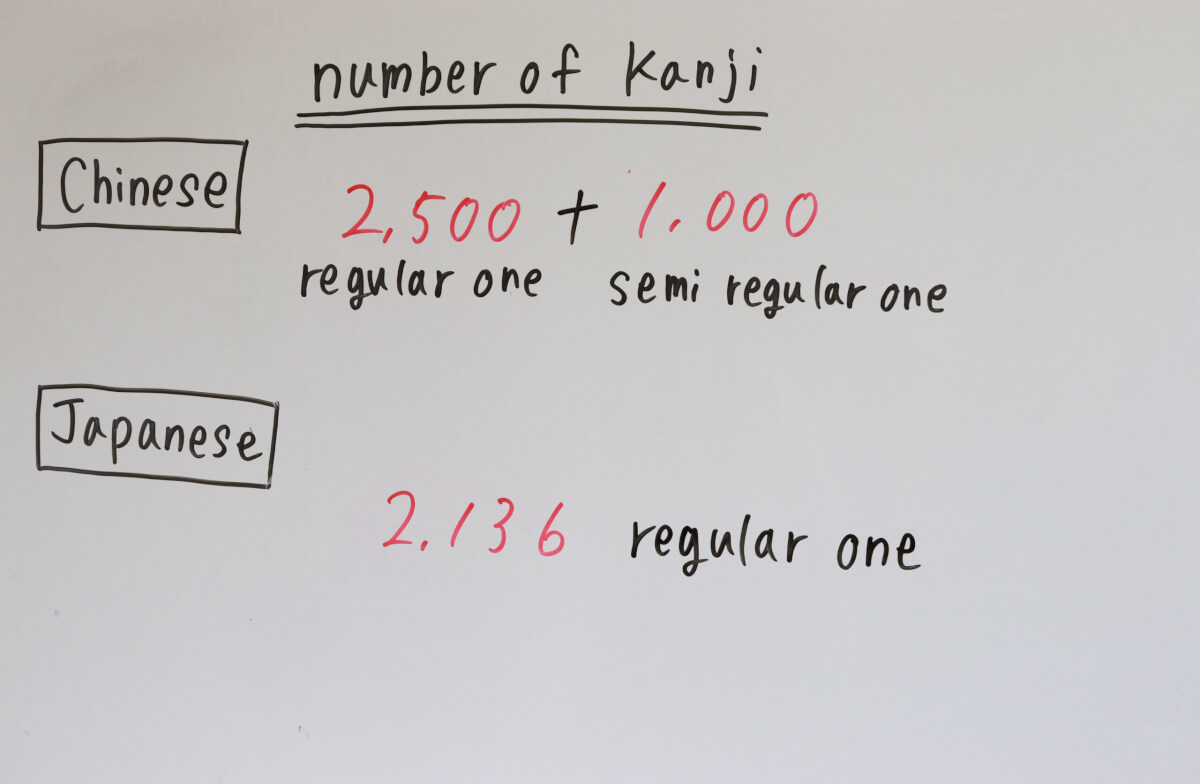- Release Date:
Chinese vs Japanese alphabet

Both Chinese and Japanese use Kanji: Chinese characters. You may think they are the same, but they are completely different. This article introduces the differences between Chinese and Japanese characters.
What is the difference between Chinese and Japanese alphabet?
First, Chinese and Japanese are not the same. Both use Chinese characters, and some of them are similar. However, for Japanese people, many of Chinese kanji has different shapes and meanings, although some of them are somewhat recognizable. First, let me explain the major differences between them.
Chinese language has Kanji: Simplified and Traditional characters

The characters used throughout China are "簡体字": Simplified Chinese Characters. The characters used in Taiwan, Hong Kong, and Macau are "繁体字": Traditional Chinese Characters.
Each character represents a single meaning and serves as the fundamental writing system. Simplified characters are commonly used with simplified forms, while traditional characters has more complex forms.
And Chinese language has Pinyin. Pinyin is a system that uses the Latin alphabet to represent the pronunciation of Chinese characters. It is useful for beginners and foreigners learning Chinese as it helps with pronunciation.
Japanese language has Kanji, Hiragana and Katakana
Japanese language has three characters: Kanji, Hiragana and Katakana. Kanji is originated from China, and a core of Japanese language. Kanji is fundamental to Japanese writing and is used in many words and expressions.
Hiragana is a native Japanese syllabary used to represent sounds. Hiragana is to show Japanese origin words. And also used with kanji characters(okurigana), and used as particles, auxiliary verbs, and inflectional endings.
Katakana is another native Japanese syllabary used for the representation of foreign words, proper nouns, scientific, IT and technical terms, etc.
These character systems are combined to express Japanese text and writing.
Pronunciation in Chinese and Japanese

In Chinese, syllables are the basic units of pronunciation, and tone is crucial, with four distinct tones known as "四声 shisei": four tones. And Chinese pronunciaton is combinations of 21 consonants and 38 vowels, and has 1,600 types of pronunciations in total.
In contrast, Japanese has 5 vowels and 15 consonants and not many as Chinese. While Japanese lacks prominent tone differences, it does have accent patterns depending on context.
How often do Chinese and Japanese people use Kanji?

Chinese characters are extensively used in Chinese, whereas in Japanese, the frequency of their usage is relatively lower, with a combination of Hiragana and Katakana being more common.
In Chinese, Chinese characters are highly prevalent and used in most words and texts, including general writings, books, newspapers, and advertisements.
On the other hand, Japanese sentences cannot be written using only kanji. Hiragana and katakana are also used frequently. This may sound difficult, but each character by itself does not make a sentence. For Japanese people, sentences that use three alphabets are very easy to read.
The number of kanji in each language
As for the number of kanji, there are tens of thousands. You will feel overwhelmed to hear that, but we do not use all of them in our daily lives. Here are the number of each common used Kanji character.

The number of Chinese Kanji
The Chinese language is said to have 2,500 kanji for regular use. In addition, there are 1,000 "semi-regular Kanji" that are used less frequently but are sometimes used, for a total of 3,500. Chinese students learn about 2,500 characters in elementary school and another 1,000 in middle school.
The number of Japanese Kanji
There are 2,136 kanji characters in the Japanese language for regular use. The kanji learned in elementary school are 1,026 of the regular kanji, and the kanji learned in junior high school are 1,110 of the regular kanji.
The example of Chinese and Japanese kanji in the same meaning
Some of the letters in Chinese and Japanese are the same. However, the way they are read and written are totally different.
This is due to historical and cultural reasons. They differ in both meaning and pronunciation. Additionally, even for the same characters, their usage and writing may differ between Chinese and Japanese.
Here are some examples of words with meanings and pronunciations.
| words | Chinese(簡体字) | Japanese |
|---|---|---|
| country | 国 (guó) | 国 (kuni) |
| word | 语言 (yǔyán) | 言葉 (kotoba) |
| study | 学习 (xuéxí) | 勉強 (benkyou) |
| book | 书 (shū) | 本 (hon) |
| family | 家庭 (jiātíng) | 家族 (kazoku) |
| love | 爱 (ài) | 愛 (ai) |
| friend | 友 (yǒu) | 友達 (tomodachi) |
As you can see, the same kanji can be pronounced differently, and you can tell that the shapes are similar but different.
We have introduced the differences between Chinese and Japanese. Some of you may have thought that the Chinese characters in each language are the same, but after reading this, you may have realized that they are different even if they are a little similar.
